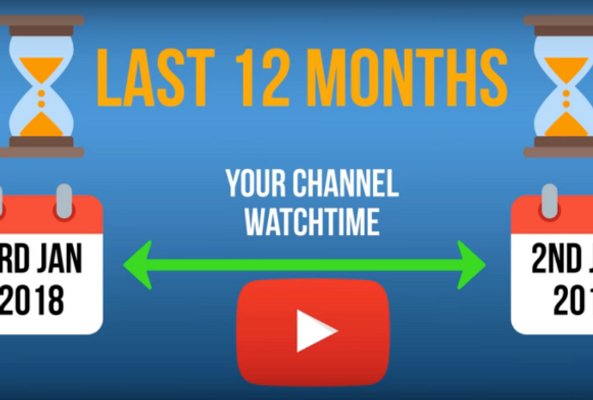In addition to being an avid movie and gaming enthusiast, Uttaran Samaddar is an experienced writer who has lent his creativity and unique perspective to various publications. He loves hearing and telling stories.
YouTube Algorithm Hack: Chase Watch Time and Engagement — Not Views
As the YouTube algorithm evolves, creators learn to prioritize different metrics on their channels. They might be interested in views, click-through rate, subscribers gained, and other markers of success. But did you know that the most obvious one, YouTube views, is not the best catalyst for growth? In 2024, watch time and viewer satisfaction (also known as engagement) are clearly in the lead.
The truth is that it's hard to get more views without first satisfying your audience and making them watch longer. Only then does the YouTube algorithm recommend your content to more people!
Read More: Understanding the YouTube Algorithm in 2024
But, how do you strike the perfect balance between keeping your audience glued to the screen and ensuring they walk away fulfilled? Let's break it down.
Watch Time
Watch Time is often considered the holy grail of YouTube metrics. It indicates how long viewers stay on a platform and can impact a channel's ability to rank and gain suggested views. In many cases, watch time on YouTube is more important than the average viewer retention rate.

Of course, it is one of the essential factors for getting monetized, and for good reason. A high watch time for your channel would typically mean that viewers like to binge on your content and that’s one of the best signals to the algorithm!
Viewer Satisfaction
YouTube has been increasingly focusing on viewer satisfaction, which encompasses likes, comments, and overall engagement. With the help of these indicators, the recommendation system on YouTube learns how to serve the viewer the best possible video every time.

More recently, YouTube has also used surveys to ask the viewers directly about their experience on the platform, which makes the viewers feel more included in the platform. The positive response has prompted YouTube to make viewer satisfaction the central aspect of the new and improved algorithm.
Read More: YouTube's 'Suggested Videos' Algorithm: How to Crack It
Is Watch Time Better Than Views?
Ah, the age-old question. While views give you an overview of your content's reach, watch time offers a deeper look into viewer engagement. A video with fewer views but higher watch time often indicates content that resonates more deeply with your audience. So, if you're looking to build a loyal community around your channel, watch time should be your go-to metric.
Striking the Balance
Striking a balance between watch time and viewer satisfaction is essential for long-term success on YouTube. While watch time can help you climb the algorithmic ladder, focusing solely on it can lead to short-term gains. On the other hand, viewer satisfaction is about building a lasting relationship with your audience, which is invaluable for any creator.
In this video by Creator Insider, Todd Beaupre, who leads YouTube's growth and discovery team, emphasizes focusing on long-term satisfaction rather than just maximizing watch time. Todd advises creators to think about what their audience wants and find the best fit, as the algorithm will then match that.
So how do you balance watch time with viewer satisfaction? Here are some tips:
1. Go for Quality Over Quantity
In the age of pumping out content with AI, this advice seems counter-intuitive. But, instead of focusing solely on watch time, aim for content that provides real value. Whether it's a how-to guide or an in-depth review, make sure your videos offer something meaningful.
When viewers find value in your content, they're more likely to engage with it, binge it, share it, and discuss it with others. And soon enough, enable you to foster a sense of community within them!
2. Make Engaging Videos
To boost your watch hours and satisfy viewers, make your content engaging from start to finish. Use storytelling techniques, high-quality B-rolls, and even interactive elements like polls to keep your audience invested.
3. Monitor Viewer Feedback
Always keep an eye on the comments section and any feedback you receive through social media or direct messages. This real-time feedback is gold when it comes to gauging viewer satisfaction. It's also a good way to spot new video ideas!
Read More: How to Get Subscriber Feedback from a YouTube Analytics Deep Dive
4. Experiment and Analyze
Don't be afraid to experiment with different video formats and lengths. Use YouTube Analytics to track how these changes affect both watch time and viewer satisfaction.
For example, if you notice that shorter videos are being watched to completion but contribute less watch time than longer videos, that's a sign you're striking a good balance.
The YouTube algorithm is a complex beast that creators often find themselves trying to tame. It helps to keep an eye on your analytics to understand what's working and what needs improvement and act upon it.
Watch Time and Viewer Satisfaction Go Hand-in-Hand
If you satisfy viewers with the right content, you’ll see results in the form of an improved retention rate, higher returning viewers, and hopefully, more watch time! The key takeaway is to find the right balance.
The YouTube algorithm is itself made up of several algorithms that work on different aspects of the platform. While we can talk about the algorithm from a wider overview, there are nitty-gritties we simply cannot go over in a single blog post. But worry not, we have for you the ultimate guide to the algorithm brought to you by our YouTube experts. Watch it right here:
So, go ahead and experiment, analyze, and most importantly, create content that you're passionate about. The numbers will follow. If you're a small creator looking to improve, then check out these quick fixes!



